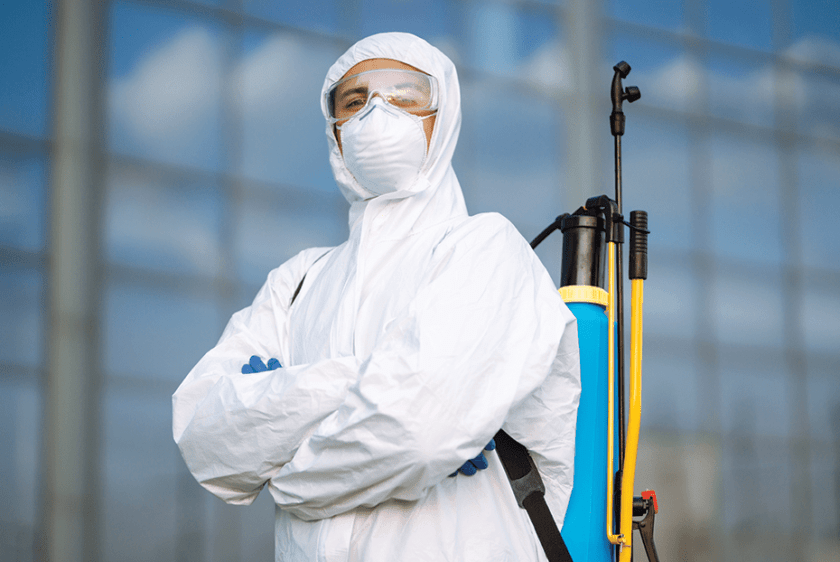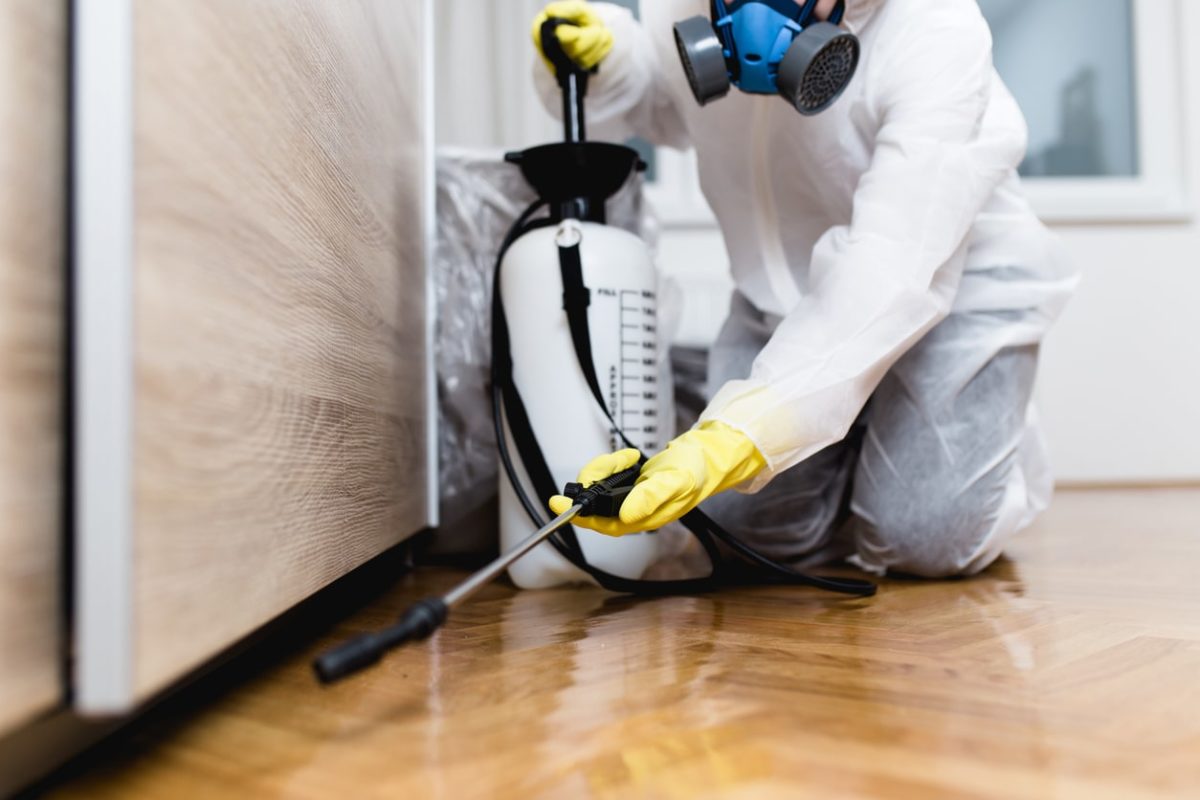Pests can damage plants and deteriorate buildings, and they also spread diseases. For instance, pests can cause leprosy, shingles, food poisoning, and many other diseases.
Pests can be controlled by preventing them from entering or removing them from the environment. Preventive measures include correctly identifying the pests, understanding their life cycle, and what influences their populations. Click https://killianpestcontrol.com/ to learn more.

When pests infest your home, they cause damage and spread disease. They also make your home uncomfortable and unsafe. Fortunately, there are several steps that you can take to prevent infestations from occurring in the first place. One of the most common ways that insects enter homes is through gaps and cracks in foundations or walls. These can occur around windows, doors, utility pipes, and the foundation itself. Over time, moisture can make these cracks wider, allowing more insects to enter your home. Sealing these cracks is one of the most effective things you can do to keep pests away from your home.
Another way that pests get into homes is through leaky plumbing or clogged gutters. Leaky faucets or clogged gutters can provide pests with access to the water they need to survive. It is important to repair any leaks in your home as soon as you notice them, as this can greatly reduce the risk of pests entering your home.
Clutter also provides a good hiding spot for pests. Rodents, cockroaches and ants are all drawn to cluttered spaces, as they can hide under piles of paper, clothing and other materials. These areas can also be ideal breeding grounds for these pests, as they offer a quiet and secure area where they can grow and multiply without disturbance.
If you have a lot of clutter in your home, it is important to regularly clean and clear these spaces. This includes cleaning and vacuuming rooms regularly to remove crumbs, spills, and other potential food sources for pests. It is also important to store food in sealed containers and to regularly dispose of trash in both indoor and outdoor bins that are tightly closed.
Other steps that can be taken to prevent pests include reducing the amount of moisture around your home, keeping yard debris trimmed back and using pest-resistant trash receptacles. It is also important to regularly check the integrity of your home’s foundation and to repair any cracks or gaps found. In addition, you should keep your gutters and window wells free of debris to eliminate any bridges that pests could use to gain entry into your home.
Trim back vegetation that could give pests access to your home.
Clutter attracts pests to your home, and it also provides places for them to breed and hide. Remove piles of leaves and brush, keep outdoor trash cans tightly closed when not in use, and store firewood well away from the house. Tall, unkempt grass and tall shrubbery can allow pests to hide in bushes near your foundation and find an easy path to the doors or windows. Keep bushes and shrubs trimmed to at least 18 inches from your home, and make sure that they are not overhanging the roofline of your house or encroaching on the gutters or downspouts.
Inside your home, regularly vacuum and wipe surfaces to deter pests from hiding in crumbs and other debris. Make sure that food is always kept in airtight containers and that trash is disposed of in sealed cans or bags. In the kitchen, be sure to wipe down counters after each meal and to clean spills immediately. Regularly clean the pantry and refrigerator to deter rodents and cockroaches. Keep tack rooms and closets free of clutter and make sure that there are no exposed wires or other potential entry points for pests.
Pest activity tends to run in cycles. Dealing with them in the spring and summer reduces problems in the fall and winter when pests are searching for warm places to roost and food and water sources indoors.
Prevention is the primary goal in most pest control situations, and it is easier to accomplish than suppression. To prevent pests from getting into your home, seal cracks and crevices with caulk, use steel wool to fill gaps in utility pipes, and make sure that the screens on your doors and windows are in good shape and are not torn or missing.
For plants, regularly check for plant disease organisms that are sporadic or potential and may require control under certain environmental conditions, as well as for insects that are continuous or invasive. For both types, the use of proper planting techniques and timely application of soil amendments, fertilizers, mulches, composting, and watering practices will help to manage pest populations.
Keep trees and bushes trimmed back.
Pests thrive in dirty, damp and dark places, so it is important to keep the interior of your home clean. Vacuuming often, removing cobwebs, and cleaning around appliances will help prevent pest problems. It is also important to seal cracks in the home that pests can slip through. This includes door frames, eaves, and cracks around utility pipes. Also, it is a good idea to put weather stripping on doors and windows.
Keeping your yard clean can reduce the need for pest control as well. Keeping piles of wood away from the house, trimming overgrown bushes and shrubs, and good plant health care can make it harder for pests to damage your property. Plant disease organisms that cause rot, fungi and bacteria are also pests that need to be controlled because they can spread germs throughout the yard and house, causing sickness.
Some pests are constant pests that need regular control, while others are sporadic or only require treatment when certain conditions occur. In the case of some plants, it is possible to predict when a disease or other condition will favor them as a pest and take steps to reduce this risk.
There are many different types of controls used to manage pests, including exclusion, repulsion, physical removal, biological control (parasites, predators, pathogens), and chemical control using insecticides, herbicides, or nematodes. Some of these are very effective, with low risks of environmental damage or human illness. Some, such as nematodes, are very inexpensive to purchase and very safe for the environment and pets.
Pest management goals include prevention – preventing a pest from becoming a problem, suppression – reducing the number of pests to an acceptable level, and eradication – eliminating an entire pest population. If you follow the tips above, you can reduce the need for more involved pest control measures such as baits or traps, and avoid the use of spraying pesticides that are very dangerous to humans and animals, and can drift inside the house. If you do need to use a pesticide, consult your local cooperative extension service office for advice.
Keep trash cans and recycling bins tightly sealed.
Leaving garbage cans and recycling bins out in the open can give pests easy access to food and nesting areas. Keeping your trash cans and compost bins as far away from the house as possible and ensuring they are tightly sealed will help deter pests from poking around in them. If you live in a rural area, you may find it useful to invest in a heavy-duty metal enclosure for your trash cans and compost pile. Even in urban areas, a simple tarp should keep raccoons and other creatures from knocking over your bins to dig through them.
Clutter provides hiding places for pests, gives them easier access to your home, and makes it more difficult to get rid of them. Make sure to clean up any crumbs or other debris in and around your home on a regular basis.
If you are unable to eliminate a pest on your own, there are many options available for Pest Control. For a quick solution, traps and baits can be used. Pesticides, however, should only be used by licensed professionals as they are incredibly toxic and can cause serious health problems if ingested or inhaled by humans or pets.
There are also more natural ways to control pests, such as using parasitic nematodes to kill off harmful bugs. These microscopic worms are introduced to the soil and then attack the bugs that harm your garden, such as grubs and fleas. They are an excellent way to help with organic Pest Control and do not require any chemical products at all.
Before you decide to use any Pest Control methods, it’s important to understand why the pest is there in the first place. This will help you determine whether or not it’s worth the effort to eliminate it. For example, if the pest is spreading diseases or ruining plants, it’s probably time to take action. But if it is just annoying or unsightly, you may be able to tolerate the pest for now.
For more information on pest control, contact us today. We’d be happy to answer any questions you may have and assist you in finding the best solutions for your unique situation.
